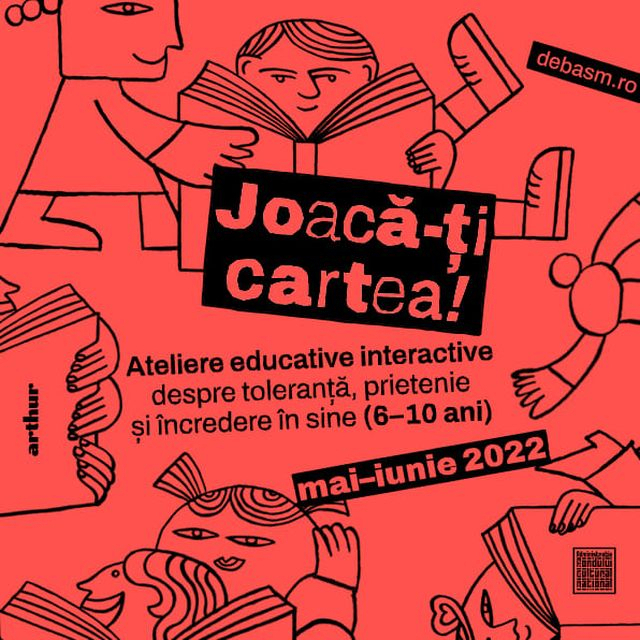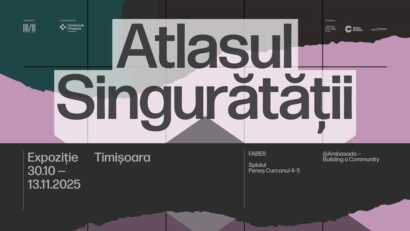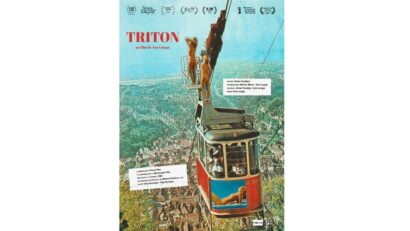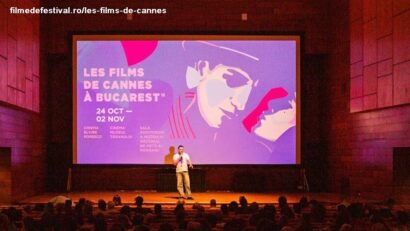A fresh turn for children’s literature published in Romania
The Fairy Tale Association

Corina Sabău, 12.11.2022, 14:00
The Fairy-Tale Association of Writers for children and teenagers is a professional association. It was established in 2018 and it seeks to promote contemporary Romanian literature for children. The Association also supports creators and facilitates the access of children coming from underprivileged families to books and tales. Due to the numerous ongoing projects, thousands of children and youngsters had the chance to meet their favorite writers and their works, in libraries, schools, museums, community centers or bookfairs and festivals. Each year, the Fairly Tale writers travel to villages and underprivileged communities, in a bid to meet children there, staging creative workshops and making book donations as part of the Fairy Tale Caravans. The LittleLit Festival the Association has organized connects literature for children written in Romania to the international one, while the educational resources the Fairy Tale writers create support pupils, teachers and librarians. This year, the Fairy-Tale Association has held a series of educational workshops which promoted friendship, inclusion, diversity and tolerance. The workshops have been tailored for children aged 6 to 20, living in several rural localities across Romania. The workshops are part of the project Play Your Book! which kicked off with a book-raising campaign. We sat down and spoke to one of the founders of Fairy Tale Association, writer Victoria Pătrașcu, about the role of the Association and about the workshops held this year.
Victoria Patrascu:
“Fairy-Tale, the Association of writers for childrens and teenager books is an association which, ever since it has come into being, in 2018, has sought to support creators of literature for children in Romania and, especially, to facilitate the access of children, and mainly those living in underprivileged areas, to contemporary literature for children. We shall not refrain from admitting that quite a few of the communal libraries have an outdated or a limited amount of book supply, and the children living there do not get round to reading contemporary stories, that is why they do not find themselves in the literature they read. Obviously, they also do not have the chance to meet writers of contemporary literature. On a number of occasions we found out those children had been literally taken aback by the fact that we, the writers, were alive and kicking, we were living human beings, we were writers of our time. Every time we went there, our encounters with those children are extraordinary, and in the long run they are impressed with the tales we tell, thereby discovering how exactly they can tackle literature. Our project, Play your Book!, one of the most recent ones, starting off from the tales, seeks to enable us to play and learn at the same time. I held workshops in two localities in Dambovita County, in Conțești and Titu. The meeting we had in Conțești was extraordinary. There is also a community of traditional Rroma population and I interacted with a great many Rroma children who came to the library for the first time, and on that occasion they discovered that fabulous world of books, of stories or drawings, many even got an access pass for the library, and we were brimming with joy because of that. Allow me to also mention the fact that we were not alone in our undertaking, we had two extraordinary partners, namely EduCab, the Communal Libraries Network and the Arthur Publishers, the one who helped us take new books to those places and reshuffle the already outdated book supply we found there.”
“Play your Book !” continued with the work on a pedagogical kit, prepared by the women members of the Fairy Tales Association. It is an important project, meant to offer educators and librarians alternative methods to explore the stories which as part of childrens literature. Through this pedagogical kit that will be given out to a great many librarians, teachers, primary school teachers and cultural educators, the project caters for the dissemination of the European values and encourages critical thinking in as many communities as possible across the country.
One of the women writers, founders of the Fairy Tale Association, Victoria Pătrașcu, is a writer of books and plays for children. Victoria Patrascu had her debut with The Day Sleep Ran Away, brought out by the Nemi Publishers in 2008 and the Book for Children Publishers, 2017, the book that enjoyed a real success, being subsequently turned into a stage play, featuring the Momolino troupe, or into a radio drama, as a Radio Romania production. In 2012, Victoria Patrascu published an anthology titled The Dwarf Oak Tree, the Best Father that Can Be, brought out by the Childrens Book Publishers. The book was a finalist as part of the Ready for Press Gala. In 2013, The Oak Tree, the Best Father that Can Be was turned into a radio play and broadcast by Radio Romanias National Radio Drama Desk. In 2017, the volume was awarded the Excellence Prize for Childrens Literature, awarded by the Itsy Bitsy Radio Channel. Other books for children followed. Aaaaa Love Story and the Little Notes Chance, brought out by Cartier Publishers, TiriBomBamBura, Five Rolling Stories, brought out by the Guthenberg Books Publishers, Letters from Lapona, Zuralo and the Charmed Little Wheel, Zuralis Song, Gaston Tomberon, the hero of Acheron, The Untamed Women, A Recipe for Courage, Ariadnas Amazing Journeys. Victoria Patrascu is also the author of The Little Pretzels Adventures, brought out by the Univers Publishers and The Dragon Number 32.
With details on her writers undertaking, here is Victoria Pătrașcu herself.
“I have been trying hard that, apart from the activities I am involved in, with the Fairy Tale Association, I should find time for myself to write. The most recent story I wrote is The Dragon number 32, it saw a rather belated launch as part of this years edition of the Bookfest Bookfair in Bucharest and I was very happy when, yet again, I had a face-to-face meeting with the children. It is the story of a streetcar, rolling from the city center to the outskirts and somehow connecting the two worlds. It is a streetcar where little girl equally discovered the real and the fantastic Bucharest, since many times, children, when they look out the window, can see more things that we, the adults, can see. It is a story inspired by my daughter and by the rides I took to her school, by the people I met for many years, in streetcar 32. From that streetcar, connecting Rahova to the city center, I saw so many derelict yet still beautiful buildings, blocks of flats looking like bedrooms or giants, for the little girls in the story. It is a very touching story, also speaking about the homeless people who sometimes live in the belly of Dragon number 32, a story that can open many debates with the readers, a book that was sensationally illustrated by Mihaela Paraschivu.”(EN)






























